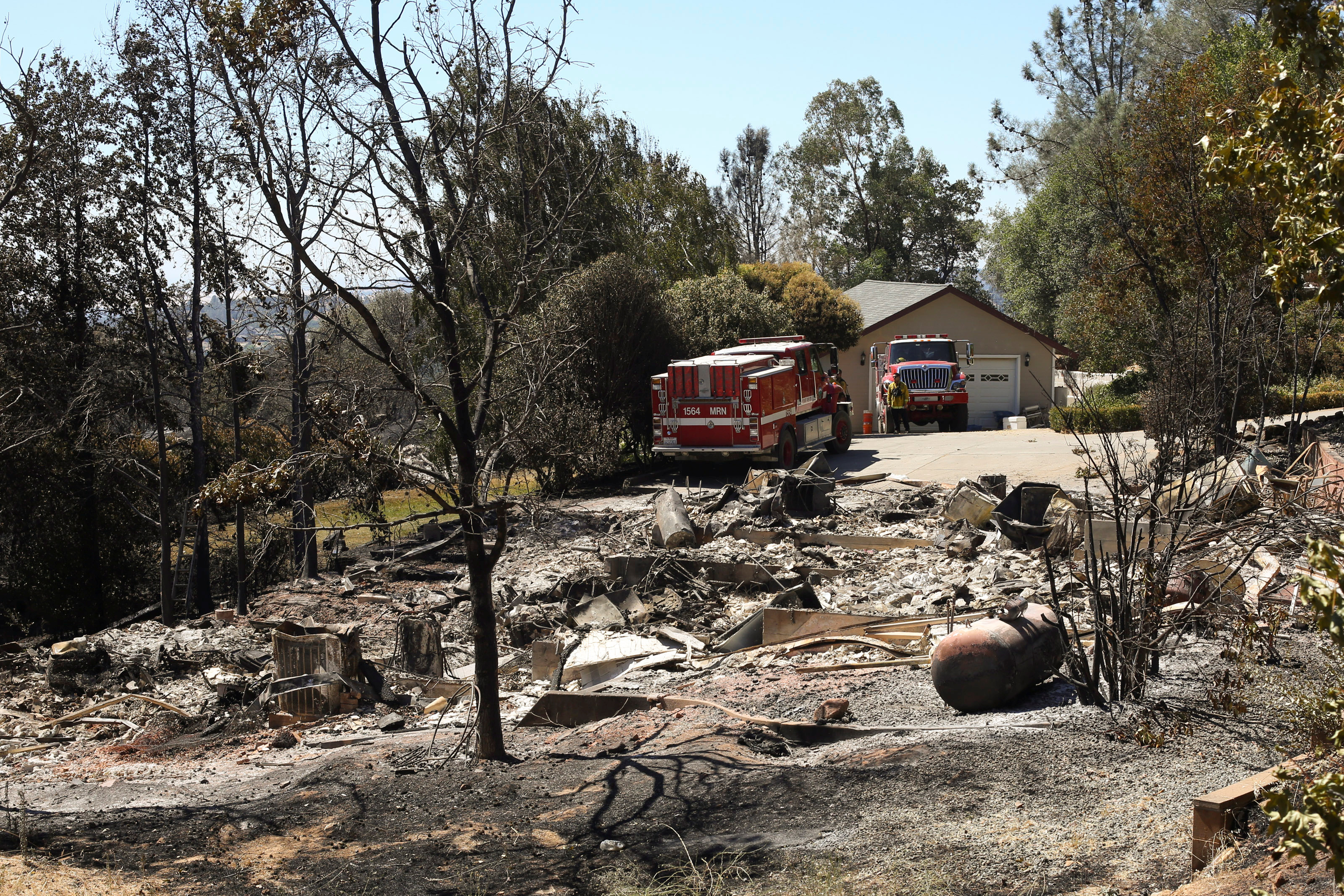
(Reuters) – Residents of a historic gold-mining town in central California began returning home on Friday as evacuation orders prompted by a massive wildfire were lifted, but some 1,500 structures remained threatened by the flames.
Around 2,000 residents of the town of Mariposa, in the foothills of the Sierra Nevada mountains, fled their homes on Tuesday as the so-called Detwiler Fire bore down on them.
The blaze, which has blackened more than 75,000 acres, destroyed 125 structures, 61 of them homes, according to the California Department of Forestry and Fire Protection.
The Detwiler, one of dozens of major wildfires burning across the U.S. West, was 25 percent contained as of Friday evening, Cal Fire said on its tracking website.
“Even though the fire has grown in one area, there’s containment in other areas and those are safe for the owners to go back,” Cal Fire spokesman John Clingingsmith said.
A total of 5,000 residents in the small communities on the edge of the Yosemite National Park have been evacuated since the fast-moving fire broke out on Sunday, including the town of Coulterville.
“Except for (Wednesday), this fire doubled in size every day,” Tim Chavez, a state fire official said during the community meeting. “That is really unusual for it to progress like that.”
More than 3,800 firefighters, working in temperatures of 90 to 96 degrees Fahrenheit (32 to 36 Celsius), were battling the fire, Cal Fire said.
Chavez blamed the fire’s growth on spot fires, drought and grassy vegetation. The area’s rough topography made fighting the blaze harder, he said.
Governor Jerry Brown declared a state of emergency for Mariposa County on Tuesday.
The cause of the fire is under investigation.
A total of 44 large fires across 11 western states were burning on Thursday, according to the National Interagency Fire Center’s website.
(Reporting by Brendan O’Brien in Milwaukee, Gina Cherelus in New York and Dan Whitcomb in Los Angeles; Editing by Larry King and Bernadette Baum)








